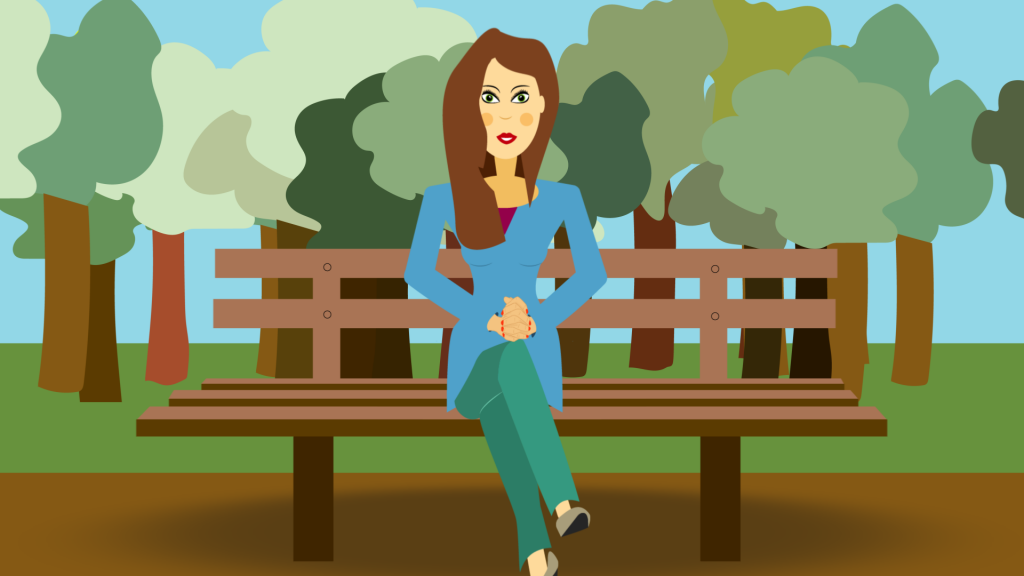
Joint Cracking
Affected individuals attempt to release nervous energy by cracking their joints, most often their knuckles. If the cracking is suppressed, they experience tension and an urge to perform the behavior.
Prevalence
Joint cracking is a common habit. Knuckle cracking—the most common form—is seen in approximately 25 (Castellanos & Axelrod, 1990) to 45 percent (Swezey & Swezey, 1975) of the population (Boutin et al., 2017). For 2.8 percent of the affected persons, the behavior leads to some impairment at least once during their lifetime (Moritz et al., 2023a).
Consequences
Over-stretching the knuckles to the point of causing a cracking sound can cause swelling and joint weakness.
Habitual knuckle cracking can lead to decreased strength of grip and, in some cases, even functional impairment of the hand. In contrast, cracking of the neck can lead to serious damage (e.g., Deǧtrmenci et al., 2011; Fujii et al., 2018).
Trichophagia
Trichophagia (“hair eating”, the eating of pulled-out hair—or sometimes just licking one’s hair), refers to the repeated swallowing of hair and is classified as an additional symptom of trichotillomania.
Prevalence in individuals with trichotillomania
About 5 to 20 percent of individuals with trichotillomania also suffer from trichophagia. This behavior appears to be more common in individuals under the age of 30 (Christenson, 1991; Grant & Odlaug, 2008).
Consequences
The swallowed hair—also known as a hair bezoar—can clump together in the stomach or intestines and may cause serious medical complications.
Dermatophagia
People who are affected by dermatophagia (“skin eating”) repeatedly bite their own skin, leaving it bloody and damaged. The disorder is referred to by some experts as a subtype of skin picking or nail biting (para-onychophagia).
Affected individuals typically bite the skin surrounding their fingernails and knuckles.
If the behavior persists over a longer period of time, calluses may form in these areas, which may increase the urge to bite the affected areas.
Awake bruxism
Awake bruxism refers to the grinding and clenching of the teeth with no functional purpose while one is awake (Shetty et al., 2010). Mild awake bruxism occurs in about 37.7 percent of the population at least once during their lifetime, and 3.7 percent reports a severe form (Moritz et al., submitted).
Unlike teeth grinding during sleep, awake bruxism is seen as a body-focused repetitive disorder. Severe cases may damage the teeth and may lead to headaches and temporomandibular joint disorders.
Thumb sucking in adults
Sucking one’s own fingers, especially the thumb, is relatively uncommon among adults. Approximately 6.33 percent of 18 to 25 year olds exhibit this behavior (Ganapathi et al., 2021). In the general population, approximately 7.3 percent are affected (Moritz et al., 2023a).
If thumb sucking persists beyond the age of five, dental malocclusion (misalignment) may occur.
Compulsive nose picking
Although picking one’s nose is considered socially inappropriate, over 90 percent of adults pick their nose an average of four times per day (Jefferson & Thompson, 1995; Sah, 2020). Severe cases of compulsive nose picking that has visible consequences (e.g., nosebleeds and injuries to the nasal septum and mucous membranes) have a lifetime prevalence of 1.4 percent in the general population (Moritz et al., 2023a).
Literature
Boutin, R. D., Netto, A. P., Nakamura, D., Bateni, C., Szabo, R. M., Cronan, M., Foster, B., Barfield, W. R., Seibert, J. A., & Chaudhari, A. J. (2017). “Knuckle cracking”: can blinded observers detect changes with physical examination and sonography? Clinical Orthopaedics and Related Research, 475(4), 1265–1271. https://doi.org/10.1007/s11999-016-5215-3.
Castellanos, J., & Axelrod, D. (1990). Effect of habitual knuckle cracking on hand function. Annals of the Rheumatic Diseases, 49(5), 308–309. https://doi.org/10.1136/ard.49.5.308
Christenson, G. A., Mackenzie, T. B., & Mitchell, J. E. (1991). Characteristics of 60 adult chronic hair pullers. The American Journal of Psychiatry, 148(3), 365–370. https://doi.org/10.1176/ajp.148.3.365
Deǧtrmenci, E., I̊pek, M., Kiroǧlu, Y., & Oǧuzhanoǧlu, A. (2011). Wallenberg Syndrome following neck cracking: a case report. European Journal of Physical and Rehabilitation Medicine, 48(1), 167–168. https://europepmc.org/article/med/21508912
Fujii, M., Ohgushi, M., & Chin, T. (2018). Brain infarction due to vertebral artery dissection caused by a bone protrusion from the condylar fossa in a juvenile case. British Journal of Neurosurgery, 34(2), 232–234. https://doi.org/10.1080/02688697.2018.1435850
Ganapathi, A., Prabakar, J., & Jeevitha, M. (2021). Prevalence of malocclusion and its relationship with deleterious oral habits among 18–25 years old adults attending a private dental college- a hospital based cross sectional study. Journal of Contemporary Issues in Business and Government, 27(02). https://doi.org/10.47750/cibg.2021.27.02.060
Goldstein, R. E., & Auclair Clark, W. (2017). The clinical management of awake bruxism. Journal of the American Dental Association (1939), 148(6), 387–391. https://doi.org/10.1016/j.adaj.2017.03.005
Grant, J. E., & Odlaug, B. L. (2008). Clinical characteristics of trichotillomania with trichophagia. Comprehensive Psychiatry, 49(6), 579–584. https://doi.org/10.1016/j.comppsych.2008.05.002
Jefferson, J. W., & Thompson, T. D. (1995). Rhinotillexomania: psychiatric disorder or habit?. The Journal of Clinical Psychiatry, 56(2), 56–59.
Kawakami, S., Kumazaki, Y., Manda, Y., Oki, K., & Minagi, S. (2014). Specific diurnal EMG activity pattern observed in occlusal collapse patients: relationship between diurnal bruxism and tooth loss progression. PLOS ONE, 9(7), e101882. https://doi.org/10.1371/journal.pone.0101882
Moritz, S., Scheunemann, J., Schmotz, S., Hoyer, L., Grudzień, D., & Aleksandrowicz, A. (2023a). Prevalence of body-focused repetitive behaviors and disorders in a representative population sample.
Sah, D. E., Koo, J., & Price, V. H. (2008). Trichotillomania. Dermatologic Therapy, 21(1), 13–21. https://doi.org/10.1111/j.1529-8019.2008.00165.x
Shetty, R. M., Shetty, M., Shetty, N. S., & Deoghare, A. (2015). Three-alarm system: revisited to treat thumb-sucking habit. International Journal of Clinical Pediatric Dentistry, 8(1), 82–86. https://doi.org/10.5005/jp-journals-10005-1289
Shetty, S., Pitti, V., Satish Babu, C. L., Surendra Kumar, G. P., & Deepthi, B. C. (2010). Bruxism: a literature review. Journal of Indian Prosthodontic Society, 10(3), 141–148. https://doi.org/10.1007/s13191-011-0041-5
Swezey, R. L., & Swezey, S. E. (1975). The consequences of habitual knuckle cracking. The Western Journal of Medicine, 122(5), 377–379.
Tranchito, E., & Chhabra, N. (2020). Rhinotillexomania manifesting as empty nose syndrome. The Annals of Otology, Rhinology, and Laryngology, 129(1), 87–90. https://doi.org/10.1177/0003489419870832
Leave a Comment